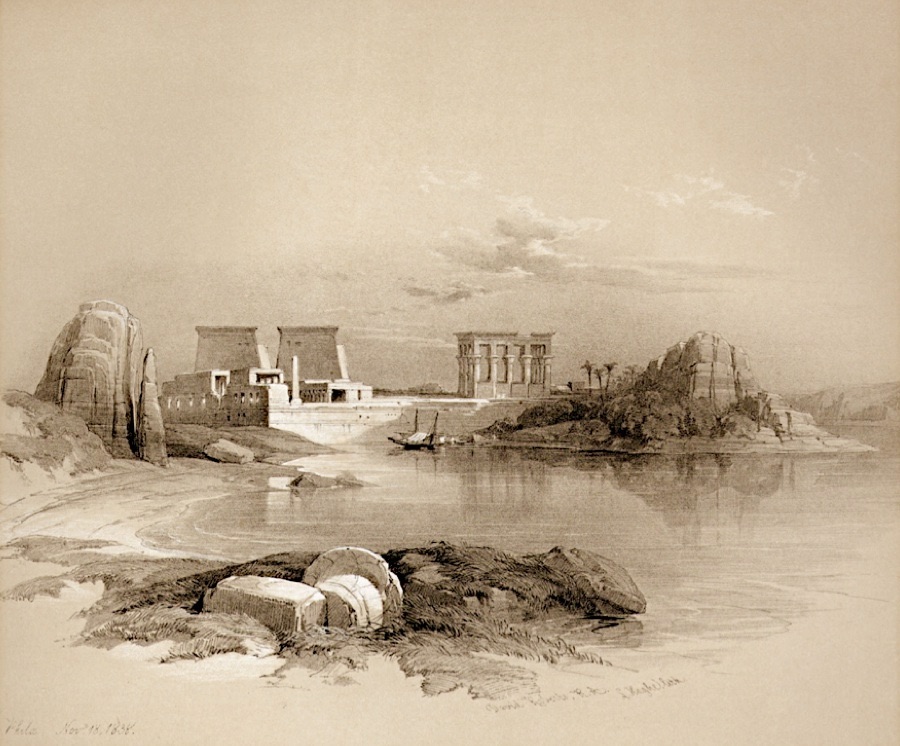ISLAND OF PHILÆ, LOOKING DOWN THE NILE.
THIS beautiful Island, and the objects which enrich it, seen from any point of view, furnish a subject to the artist; and he would find in Philæ alone materials to fill a portfolio. Beauty is its characteristic; for however much the ancient structures of Egypt may, by their vastness and extent, and the magnitude of their composing parts, cause us to reflect upon the powers employed to construct and arrange them, and thus impress us deeply with emotions of the sublime – in beauty, Philæ, with its temples, has no rival on its sacred river.
In this view the masses of granite are seen which are covered with sculptured inscriptions, the beautiful hypæthral temple, the obelisk which contains inscriptions of great interest, part of the cloistered court, and, towering over all, the great propylon. On this side, too, is the usual harbour where the boats of travellers are secured, and the materials for the picturesque on this Island are here seen perhaps in the greatest profusion; granitic rocks and ruined temples, broken and beautiful forms of natural and artificial embankments, and the refreshing verdure of the palms and sycamores, contrasted with the arid and burning sands, which descend on the banks of the Nile even to the the water’s edge, give an air of enchantment to this spot, selected for the eternal repose of Osiris, of “him who sleeps in Philæ.”
This Island is now destitute of resident inhabitants. The remains of Arab huts desecrate the courts, recesses, and even summits of the temples. Philæ appears not long since to have been inhabited, but the few Nubians who were there have been expelled by order of their tyrant governors.


